




An Introduction to the States of Matter: Liquid Matter
Anything that has weight and takes space is called matter. The liquid is a state of matter that is neither hard like a solid nor as compressible as gas. But what is liquid in science? A liquid in science is anything that has a definite volume but no definite shape and conforms to the shape of the container that it is kept in.
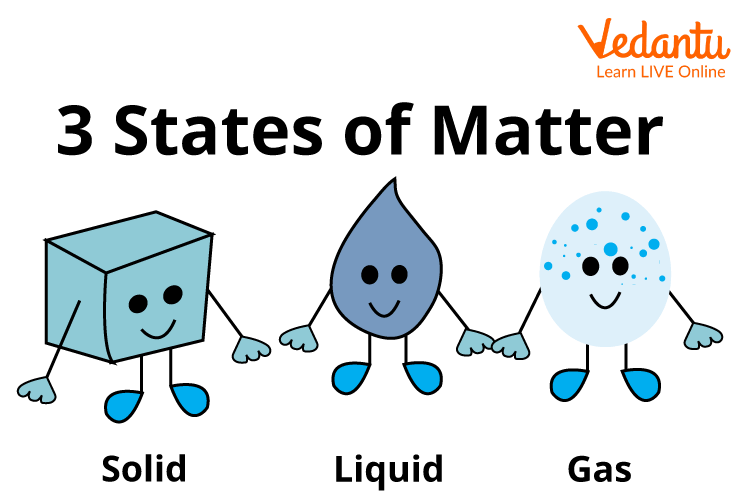
States of Matter
What is Liquid?
The liquid is a state of matter made of small particles that are distant from each other. Let us see some pictures of liquid matter.
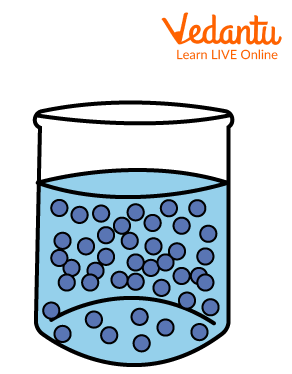
Particles in a Liquid
These particles are not arranged in a specific pattern, so they can move around and past each other. Liquids can be changed into solids and gases depending on temperature and pressure.
The process in which a solid turn into liquid is called melting.
The process in which a liquid turns into gas is called evaporation.
When a liquid turns into a solid, the process is called freezing.
When a gas turns into a liquid state, the process is called condensation.
Examples of Liquid
Some examples of liquids are as follows:
Water - Water is found all over the world, in oceans, seas, rivers, in the form of rain, etc.
Honey - Honey comes from bees and is found as a liquid in hives.
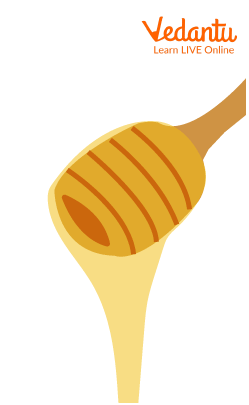
Honey
Blood - The blood in our body is also in the form of liquid.
Other examples of liquid are juice, milk, oil, etc.
Facts About Liquid State of Matter
Liquids don't have a proper shape. They take the shape of the containers they are kept in. Without a container, they form a pool or puddle.
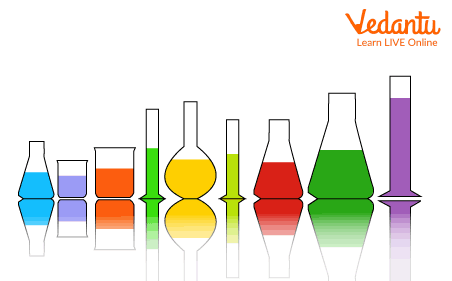
Liquids Take the Shape of their Container
Some liquids do not mix. For example, oil and water, liquid wax and water.
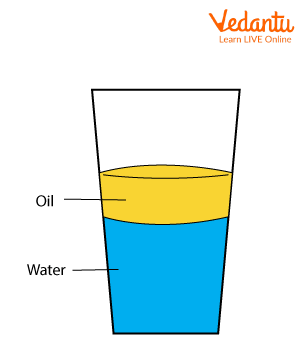
Oil and Water do not Mix
Mercury is the only metal in the form of liquid at room temperature.
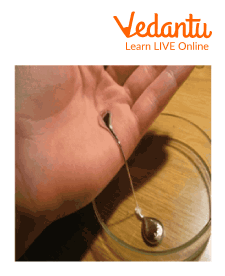
Mercury is a Liquid Metal
Dissolving is turning a solid into a liquid, like sugar in water.
Water, when frozen, turns into ice, which is solid. If water is boiled, it turns into vapour which is in a gaseous state.
A liquid can be weighed to find out how heavy it is.
Properties of Liquids
Liquids do not have a definite shape but take the shape of their containers.
Liquids can flow, and this ability is called viscosity.
Liquids have a fixed volume.
Liquids can be compressed under huge pressure.
Learning By Doing
Choose the correct answer
1. Liquids have a definite shape.
True
False
2. Which of the following things are liquid?
Book
Ballon
Chocolate syrup
None of the above.
3. Oils and water do not mix.
True
False
Solved Questions
1. Which metal is found in the form of liquid at room temperature?
Mercury
2. What is liquid?
Liquid is a state of matter. It does not have a definite shape. It has a definite volume. For example - water, milk, etc.
3. What is viscosity?
Liquids can flow, and this ability is called viscosity.
Summary
We have learnt some interesting information about liquids and other states of matter. The matter is everything that you can see, feel and touch around you. A liquid is a state of matter that has size or volume but does not have a shape. It can flow. It takes the shape of its container. Examples of liquid are water, milk, oil, juice, etc.
FAQs on Facts About Liquids for Kids to Know
1. What is the difference between solid and liquid?
Solid | Liquid |
They have a definite shape. | They do not have a definite shape and take the shape of their container. |
The particles are packed tightly together and cannot move around. | Particles in a liquid are loosely packed, and they can move around. |
2. How does water turn into vapours?
When water is heated at 100°C, it becomes vapours. This process is called evaporation.
3. Which is the fastest-flowing liquid?
Water is the fastest-flowing liquid.









